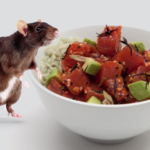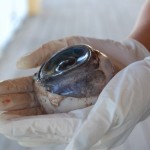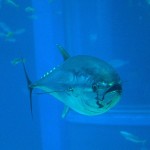“Western Atlantic bluefin have declined by 82% since 1970 and it’s estimated there are only remaining 41,000 remaining reproductively mature individuals.”
Those are the words Sheril somberly provides in her post at the Intersection. Carl Safina over diner once told me and others that tuna missing from the oceans was the equivalent of the African savannas without lions.
There are two things you can do to
1. As Sheril writes,
Next March, an upcoming vote on a proposal will take place to stop the international commercial trade of Atlantic bluefin tuna. Unfortunately, the National Marine Fisheries Service (NMFS) has also proposed a measure to increase the number of bluefin tuna that can be harvested from U.S. waters. (Proposed Rule, RIN 0648-AX85, Atlantic Highly Migratory Species; Atlantic Bluefin Tuna Season and Retention Limit Adjustments). At a time when the world is paying attention to a species in crisis, our country is not exactly setting a good example. Of course, this a complicated issue: Catch limits are presently not being met, but the discrepancy is due to regional changes, an altered population structure, and overall stock depletion. Regardless, the solution is assuredly not to increase pressure on a dwindling stock.
The Pew Environmental Group has issued a letter asking NMFS to extend the comment period on their proposal, consider additional scientific research, and allow the international community to make important decisions regarding the future of management. I hope readers and bloggers alike will join me in signing Pew’s important letter and telling NMFS to slow down this misguided proposal.
2. Watch what you eat. Tuna is much like my first steady girlfriend. Wonderful but difficult and ultimately not worth the headache. I’m joking of course, but just about the tuna. Eating tuna is navigating a minefield because both your choice depends on both the species and the method of fishing. Unfortunately, the latter you are almost never likely to know. Soo…first always stay away from Bluefin. For other species of tuna (yellow fin, albacore, big eye), if you choose pole/troll or hand caught you will be fine. For simplicity, always avoid long-line caught (although a few long-line fisheries are fine, you will never know if your tuna is from one of these).






Thank you for the post. This is an issue I’ve felt strongly about for years, and I signed the petition immediately.
Even many of my friends who eat ethically have no idea about the pitfalls of eating tuna and are completely surprised when I give them the facts.
@Tessa, Thanks for signing
@NickD, Great spreading of the word.
Great post on a tragic subject. I do worry about even the most well-intentioned consumers getting the information they need to make their choices matter. Tuna is often sold as just “tuna” and waiters, chefs, or folks in the grocery store may not even know whether it’s bluefin, yellowfin, or albacore. DNA studies on other kinds of fish (like red snapper in California) have revealed an astonishing array of different species being sold under this name, but I don’t know if similar genetic studies have been done for tuna? I hope the labeling situation is at least a little better, but probably not 100% accurate…